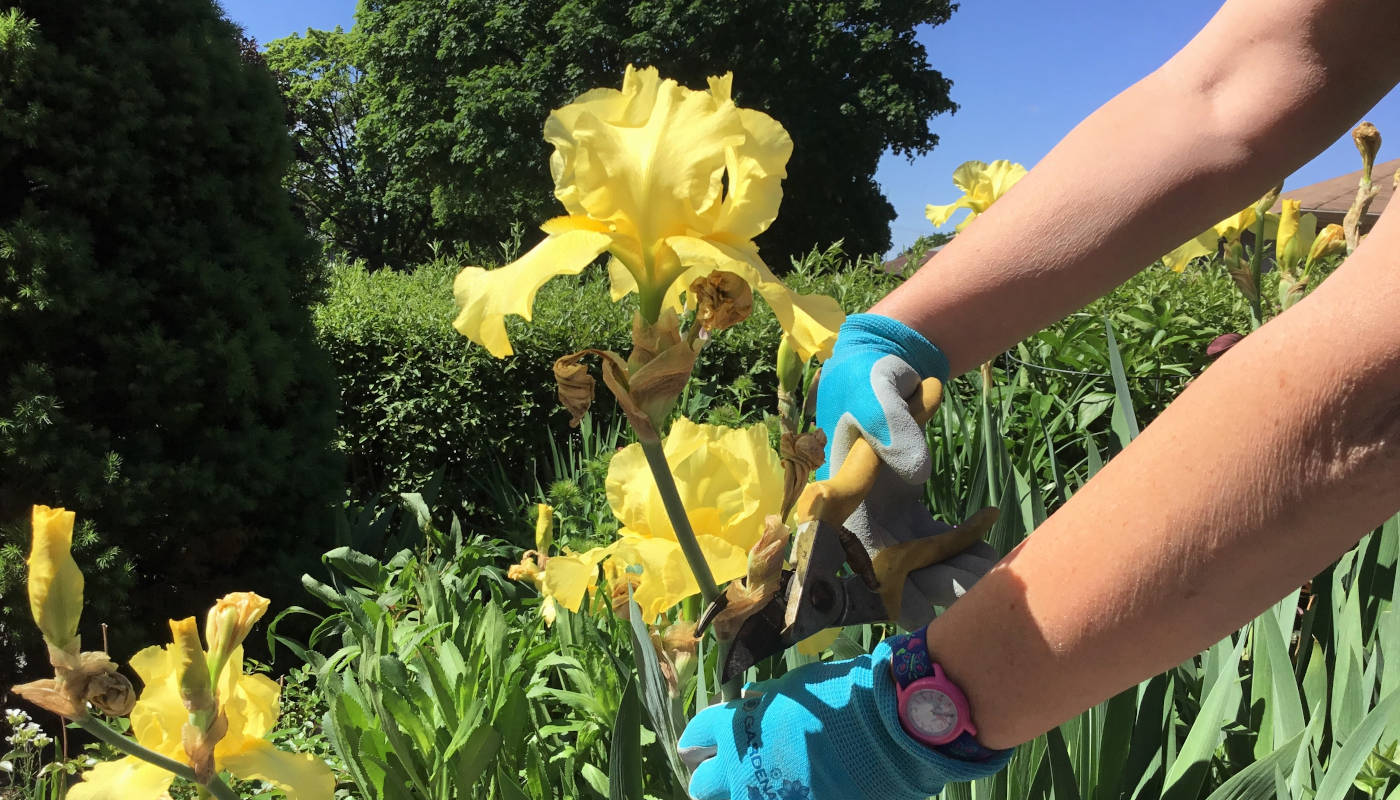Menu

Dead Heading: You'll Be Grateful That You Did It
Dead heading
What, Why, When, How
We seem to wait all winter for the garden to come up and to start to bloom, and then suddenly the show is over, the blossoms have faded, dried up, partly disintegrated. This is your clue. Now is the time for deadheading, or as one article was cleverly entitled: "off with their heads!" Perhaps you could shout this as you do it, to make yourself feel better about the fact that for these flowers their day has come and gone.
What?
So, what exactly if deadheading? It is the process of removing the dead or dying flower blossom so that the plant does not spend its energy on setting seeds.
Why?
It seems like such a shame to have to cut off the flowers it took so long to grow, but there are two main reasons why you would engage in this practice. The first is really enticing: REBLOOM. Some perennials if deadheaded in a timely fashion will reward you with a second show of colour. By removing the spent blooms, the plant has enough new energy to refocus and set a second round of buds. Not all perennials will favour you with a second coming but there is a chance with the following: Baby's breaths, Bee balms, Blanket Flowers, Mallow, Dianthus, Delphiniums, Foxglove, Geum, Hollyhocks, Lavender, Phlox, Salvia, Shasta Daisies and Yarrow, to name few. The second reason, which is equally valid, but less fun is: IMPROVED APPEARANCE. After all appearance is what makes the garden. These perennials will not rebloom but the garden will look neater and more appealing if the spent blooms are removed. Perennials in this category include: Iris, Bell Flower, Coral Bells, Daylilies, Hostas, Peonies, Bleeding Heart and Rose Mallows.
WHEN?
Don't fool yourself, you will know when its time to cut off the head of the dead tulip, the dead peony, the dead day lily. It doesn't require much explanation, once the flower begins to fade, closes, shrivels or turns brown, its time to remove it. There are a few exceptions, Allium once faded from purple can still make a show in the garden, hydrangea can look good in its brown golden stage, but most of the rest in your garden is just hanging around to no purpose.
How?
Choosing the exact point to make a deadheading cut can seem confusing. There is talk of a lateral leaf, lateral flower, new bud, no new bud. For most plants, however, all you need to remember is to cut spent flowers and stems back to a point where there is a new flower or bud. If no new flower is apparent, prune the stem back to a lateral leaf, that is the next leaf on the stem. The general rule of your green thumb when deadheading is to cut off a flower - the whole flower, not just its petals - and its stem, but to just above the first leaf below the dead flower. Don't leave a naked stem sticking up in the air, cut it back cleanly to encourage new growth from the base of the plant.
Often?
Some people claim to find deadheading contemplative or a form of meditation. I cannot say I fall into that category. So, don't be overwhelmed by the task at hand. Make it a plan to clip a few each night or each morning as a way to keep up. You will be rewarded, not only with a tidier garden but hopefully with a reshow of some of your favourites.
Shop Now- Choosing a selection results in a full page refresh.

